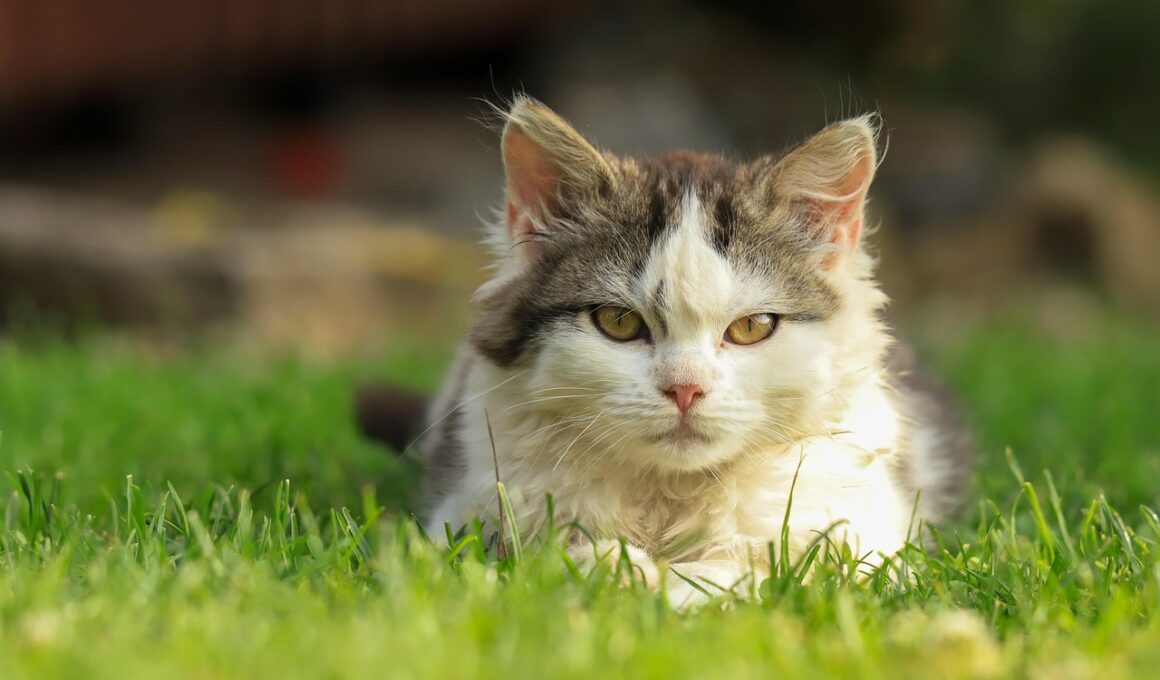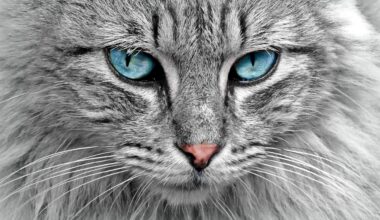Interactive Play and Its Benefits for a Cat’s Emotional Health
Understanding the significance of interactive play in enriching a cat’s emotional health is essential for pet owners. Engaging a cat in playful activities creates an emotional bond between the pet and the owner. This dynamic interaction helps monitor feline behavior, making it easier to detect any underlying emotional issues. When cats play, they engage in natural instincts such as stalking and pouncing, mimicking their behavior in the wild. This not only provides physical exercise but also prevents boredom, which can lead to destructive actions. Regular play sessions can improve mood and reduce anxiety in cats, promoting overall emotional health. It is critical that the toys used during play are safe and appropriate for the cat’s size and preferences. Owners can use interactive toys or simple household items, ensuring varied play experiences. Mindful play, where the owner imitates hunting behaviors or introduces new toys, can keep the cat stimulated. Paying attention to the cat’s reactions during play is vital for understanding their enjoyment and comfort levels. Ultimately, the goal of interactive play is to ensure happy and healthy feline companions, enriching their overall emotional and mental well-being.
Interactive play is not just about fun; it’s essential to a cat’s psychological well-being. Cats are natural hunters, and when they have opportunities to pounce and chase, it fulfills their instinctual drives. This instinctual fulfillment through play can lead to happier and healthier behavior overall. Lengthy periods of inactivity can result in obesity, depression, and behavioral problems. Interactive play is a great way to provide necessary exercise without being overly strenuous for your cat. Simple activities like feather wands or laser pointers encourage natural hunting moves, which can lead to increased confidence and reduced anxiety. Engaging in playful activities allows the cat to release pent-up energy and stress, contributing to its mental health. Choosing the right time to play is equally important; cats may favor sessions during dawn or dusk. Monitoring your cat’s behavior during playtime can provide insights into how they are feeling emotionally. Additionally, consistent play routines can alleviate stress, reducing instances of aggression or withdrawal. Encouraging variations in play routines can also keep them fresh and exciting for the cat, further enhancing the emotional benefits of these interactions.
Recognizing signs of distress in cats during play is crucial for their emotional health. Cats can exhibit behaviors like hiding, excessive biting, or aggression when they feel overwhelmed or uncomfortable. It is essential for owners to know when to stop play if the cat shows signs of frustration or anxiety. Reducing the intensity of play or introducing calming interactions with treats can help alleviate stress and keep your cat comfortable. Furthermore, it’s beneficial to allow some independent playtime alongside human interaction. This balance can empower the cat by allowing them to explore their environments and develop self-confidence. Playtime also serves as an opportunity for owners to observe their pet’s preferences. Each cat has unique tastes when it comes to toys and play styles. Keeping a variety of toys available can encourage exploration and personalization in play. Providing different surfaces and textures in toys can also cater to diverse preferences. Showing appreciation for your cat’s play behavior can positively reinforce their enjoyment, leading to more interactive experiences in the future. A well-rounded play routine contributes to better social behavior among cats.
The Role of Age and Activity Level
The age and activity level of a cat significantly influence their play preferences and behavior. Kittens are naturally more energetic and curious, requiring different forms of stimulation than older cats. Young cats may prefer vigorous, high-energy play, while older cats often need gentler interactions. Tailoring the intensity of play to accommodate your cat’s age and energy level ensures both enjoyment and safety. Younger cats may benefit from engagement through dynamic toys that stimulate their hunter instincts. Interactive puzzles can also provide mental stimulation, keeping their brains active and sharp. On the other hand, for senior cats, it’s crucial to choose low-impact activities that cater to their physical limitations. Shorter play sessions are recommended for older cats to prevent undue fatigue. Remember that as cats age, they may also have varying interests in toys. Regularly assessing and swapping out toys can maintain their engagement. Social interactions during play are equally significant. Gentle grooming or cuddling after a play session can further enrich their experience, promoting feelings of security and love. It is essential to be observant of your cat’s changes as they age and adjust their play accordingly to maintain their emotional well-being.
Interactive play can be a vital component in training and socializing a cat. By incorporating play into training sessions, owners can teach their cats commands and positive behaviors in an enjoyable way. Utilizing clicker training alongside play can enhance communication, reinforcing desirable manners through fun interactions. Cats learn quickly through positive reinforcement, and combining playful activities with training creates a dynamic learning environment. Socialization is key in developing good behavior patterns; exposing a cat to different people and environments through games can build their confidence. Play serves as a bridge for less confident cats, helping them feel more secure in various situations. Engaging with multiple family members during playtime can strengthen bonds between the cat and the household. It’s also essential for cat owners to foster positive experiences with other animals through supervised play. Creating positive associations can diminish fear and aggression towards unfamiliar dogs or other pets within the home. This foundation can lead to a smoother multi-pet household and reduce stress related to territorial behaviors. Combined, these strategies provide an enriched environment for emotional growth and stability in a cat’s life.
Plus, specific types of interactive toys contribute uniquely to a cat’s emotional healing and engagement. Toys that mimic prey, such as stuffed mice or balls, encourage predatory instincts and provide physical exercise. Motion-activated toys can stimulate curiosity and prompt active hunting behaviors. This supposed variety targets both the feline’s intellectual and physical aspects, contributing to better emotional health. Moreover, DIY toys from household items can also promote creativity and resourcefulness between the owner and the cat. Activities that involve collaborative efforts between the pet and owner foster trust and a sense of companionship. Incorporating these toys into playtime routines encourages long-term engagement and keeps the cat mentally agile. Regularly rotating between different types and styles of toys can help sustain your cat’s interest and excitement during play. Paying attention to which toys your cat enjoys most gives insight into their preferences, allowing for personalized play experiences. Offering a plethora of play options mitigates boredom and promotes a healthier environment. Additionally, the right choice of toys can enhance emotional security by facilitating their need to express themselves.
Conclusion: A Happy Cat is a Healthy Cat
In conclusion, interactive play is an essential element for maintaining a cat’s emotional health. Regular engagement through play not only fosters a strong bond between the cat and its owner, but also satisfies a cat’s intrinsic needs for activity, socialization, and mental stimulation. Remember that keeping playtime enjoyable and stress-free should always be the primary focus. Observing how your cat interacts with different toys can help tailor future play experiences and adjust activities to their preferences. It is through these playful interactions that cats can showcase their personalities, develop social skills, and express happiness. Creating a consistent play routine and recognizing signs of stress can lead to more fulfilling relationships between cats and their owners. Ultimately, investing time in understanding and facilitating interactive play will lead to happier, healthier cats. This mutual connection supports not only emotional health but also the overall quality of life for feline companions. Keep in mind that a happy cat is indeed a healthy cat, and providing sufficient interactive play opportunities is a significant step towards achieving that goal. Embrace the joy of play in your cat’s life!


